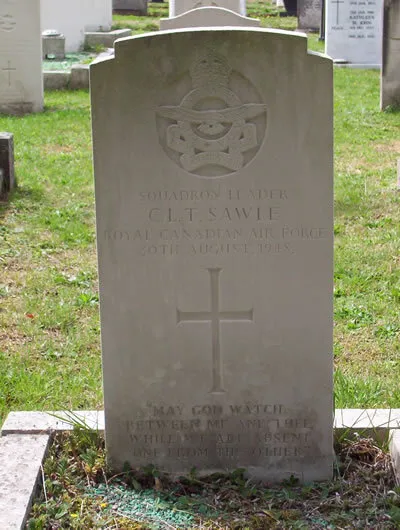Sawle, Charles Leonard Tregerthen (Squadron Leader)
Killed in Flying Accident 1948-August-30
Service
RCAF
Unit
Empire Tes (RAF)
Base
Rank
Squadron Leader
Position
Pilot
Service Numbers
C/1489
Home
Crew or Other Personnel
Meteor EE568
Meteor serial: EE568

The Gloster Meteor was the first British jet fighter and the Allies' only jet aircraft to achieve combat operations during the Second World War. The Meteor's development was heavily reliant on its ground-breaking turbojet engines, pioneered by Frank Whittle and his company, Power Jets Ltd. Development of the aircraft began in 1940, although work on the engines had been under way since 1936. The Meteor first flew in 1943 and commenced operations on 27 July 1944 with No. 616 Squadron RAF. The Meteor was not a sophisticated aircraft in its aerodynamics, but proved to be a successful combat fighter. Gloster's 1946 civil Meteor F.4 demonstrator G-AIDC was the first civilian-registered jet aircraft in the world. Several major variants of the Meteor incorporated technological advances during the 1940s and 1950s. Thousands of Meteors were built to fly with the RAF and other air forces and remained in use for several decades.
Meteor s/n EE311 had a short life with the RCAF . It was initially assigned to the RCAF Test & Development Establishment in Sept 1945. On 29 June 1946, while in transit from the Winter Experimental Establishment at RCAF Station Namao, Alberta to RCAF Station Hamilton, Ontario the pilot, F/L Hugh MacKenzie, experienced poor weather and ran out of fuel due to a faulty belly tank. He ditched the Meteor in Helenbar Lake in northern Ontario.
Meteor s/n EE361 continued the summer and winter trials begun with s/n EE311. It was put through numerous tests, including those involving cockpit heating and emergency equipment. s/n EE361 flew some 32 hours before it was damaged. By March 1947 it had been returned to England. A Meteor IV s/n RA421 was in Canada from October 1947 to November 1948, again for northern trials during which it logged 53 hours and included five air-firing sorties
One more Mark IV s/n VT196 came to Canada in July 1953. It participated in winter trials but from January 1954 onwards was used in developing the afterburner system for Canada's Orenda engine. This enabled the aircraft to reach 20,000 feet in three minutes. s/n VT196 went back to Britain in June 1955 where it was used in further experimental work until 1962
Apart from two Meteors loaned to 421 Sqn. whilst overseas in 1951, the type never flew with an operational RCAF unit. Harold Skaarup web page and Wikipedia

